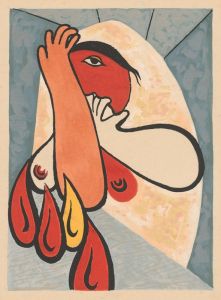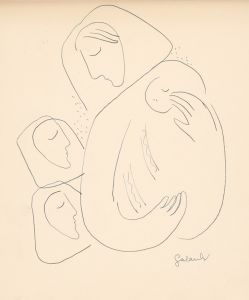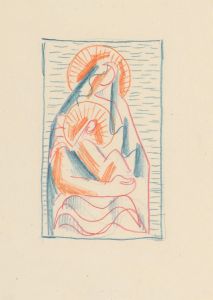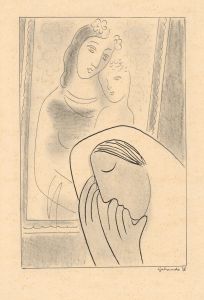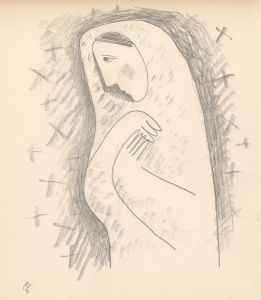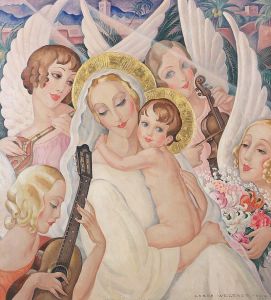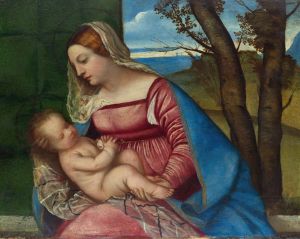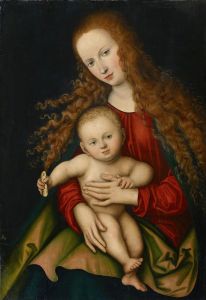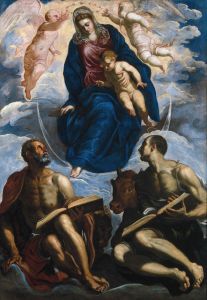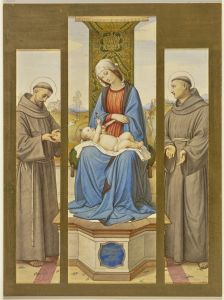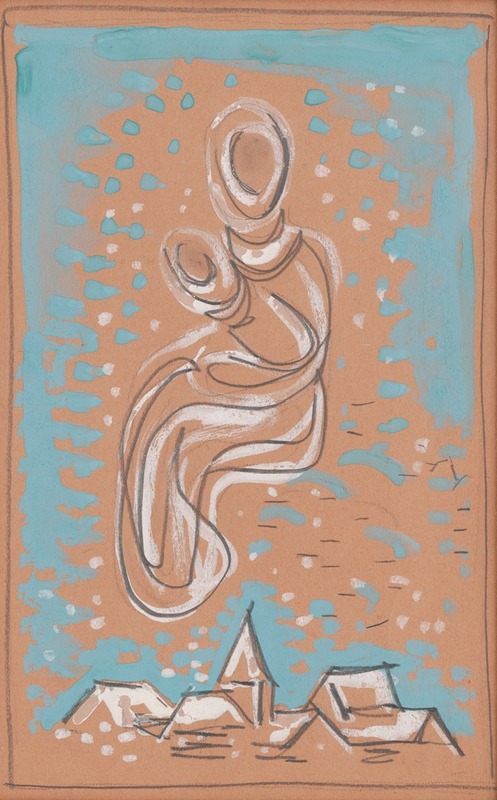
Madona
A hand-painted replica of Mikuláš Galanda’s masterpiece Madona, meticulously crafted by professional artists to capture the true essence of the original. Each piece is created with museum-quality canvas and rare mineral pigments, carefully painted by experienced artists with delicate brushstrokes and rich, layered colors to perfectly recreate the texture of the original artwork. Unlike machine-printed reproductions, this hand-painted version brings the painting to life, infused with the artist’s emotions and skill in every stroke. Whether for personal collection or home decoration, it instantly elevates the artistic atmosphere of any space.
Mikuláš Galanda was a prominent Slovak painter, illustrator, and graphic artist, known for his significant contributions to modern Slovak art in the early 20th century. One of his notable works is "Madona," which exemplifies his unique style and artistic vision.
Mikuláš Galanda was born on May 4, 1895, in Turčianske Teplice, Slovakia. He studied at the Academy of Fine Arts in Budapest and later at the Academy of Fine Arts in Prague, where he was influenced by various modernist movements. Galanda's work is characterized by a blend of traditional Slovak folk art with contemporary European artistic trends, including elements of Cubism, Expressionism, and Symbolism.
"Madona" is a painting that reflects Galanda's deep connection to Slovak cultural heritage and his innovative approach to art. The painting depicts the Virgin Mary, a central figure in Christian iconography, rendered in a style that combines both modernist and folk elements. Galanda's "Madona" is notable for its stylized forms, bold use of color, and the integration of geometric shapes, which are hallmarks of his artistic style.
The painting captures the essence of maternal tenderness and spiritual serenity, with the Virgin Mary portrayed in a contemplative pose. Her elongated figure and the simplified, almost abstract background highlight Galanda's ability to merge traditional religious themes with modern artistic techniques. The use of vibrant colors and dynamic composition in "Madona" demonstrates Galanda's mastery of form and his innovative approach to religious subjects.
Galanda was a key figure in the development of Slovak modern art, and his work, including "Madona," played a crucial role in shaping the artistic landscape of Slovakia in the 20th century. He was a member of the "Generation 1909," a group of Slovak artists who sought to create a new national art that would reflect the modern spirit of their time while remaining rooted in Slovak traditions.
Throughout his career, Galanda produced a diverse body of work, including paintings, illustrations, and graphic designs. His contributions to Slovak art were not limited to his own creations; he was also an influential teacher and mentor to younger artists. Galanda's legacy is preserved in numerous Slovak art institutions, and his works are held in high regard for their artistic and cultural significance.
"Madona" remains one of Galanda's most celebrated works, embodying his unique artistic vision and his dedication to blending modernist aesthetics with Slovak cultural motifs. The painting continues to be admired for its innovative style and its ability to convey profound spiritual and emotional depth.
Mikuláš Galanda passed away on June 5, 1938, but his influence on Slovak art endures. His work, including "Madona," is a testament to his talent and his commitment to advancing Slovak modern art.








